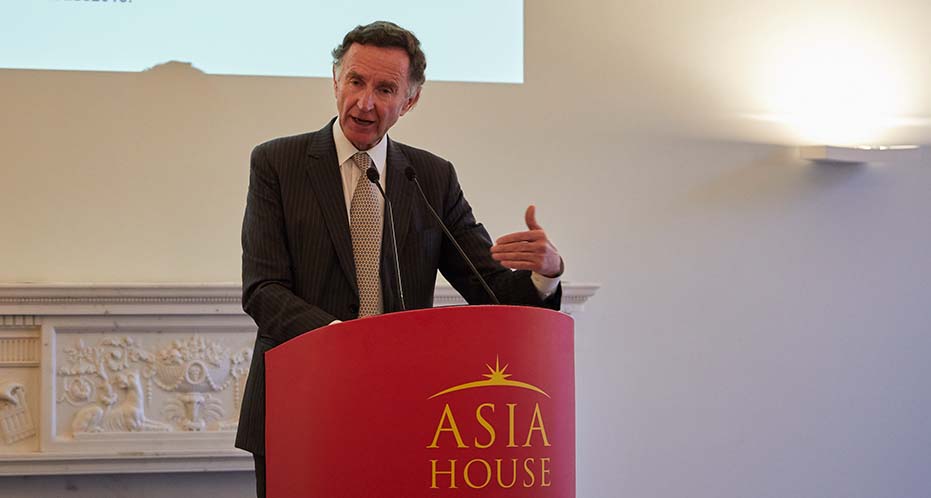Driving commercial and political engagement between Asia, the Middle East and Europe
Driving commercial and political engagement between Asia, the Middle East and Europe
Driving commercial and political engagement between Asia, the Middle East and Europe

Increasing urbanisation and connectivity in the Middle East signal a brighter future for the region, Lord Green, Chairman of Asia House, said in a compelling lecture held to publicly launch the Asia House Middle East Programme.
In a wide-ranging talk, Lord Green illuminated the social, economic and cultural history of the region, as well as its geopolitical importance in the world today. Striking an optimistic tone, the former UK trade minister said the underlying trend in the Middle East “is one of rising education and awareness, which will over time bring about a slow-burning revolution of modernity.”
Literary rates in the region have doubled from 40 per cent in 1990 to 80 per cent today, Lord Green said, emphasising the role of urbanisation behind this positive trend.
“The urbanisation story is as dramatic as anywhere in the world,” he said. “The percentage of the population living in cities has risen from 35 per cent in 1960 to 65 per cent today, and is still rising rapidly – at a rate faster than any other region in the world except Sub Saharan Africa. It will certainly reach the OECD norm of 80 per cent within the next two or three decades.”
Much of this is being driven by the Middle East’s growing relationships with Asia.
“Its connections with the rest of Asia are now growing fast. Its geopolitical relationships are becoming more diverse, more balanced,” Lord Green said.
“So is the changing pattern of Middle Eastern trade: oil exports to the rest of Asia have of course risen rapidly as East Asian economies have developed over the last generation. But it is also striking that non-oil exports from MENA have diversified sharply in the direction of Asia too.
“Twenty years ago, almost 60 per cent of those exports went to the EU; ten years later that had dropped to 40 per cent, whilst the Asian share had risen from 20 per cent to 35 per cent.”
China’s Belt and Road Initiative “will transform the future for the whole Middle East,” and usher in “a dramatic increase in physical connectivity across the whole of Eurasia,” he suggested, adding that this will “unleash economic development, investment and trade on a historic scale.”
However, there are challenges facing the region, Lord Green warned, highlighting geopolitical risks, Islamist forces, and the rise of nationalism. But the overwhelming message was one of optimism, with Lord Green seeing opportunity for modernisation in the Middle East as its economies diversify and grow.
Hence the title of his lecture: ‘The Open Futures of the Middle East.’
Read Lord Green’s lecture in full.
Lord Green’s lecture publicly launched the Asia House Middle East Programme – a series of events and research activity exploring the region’s role in the global economy and its economic relationships with Asia and the West.
